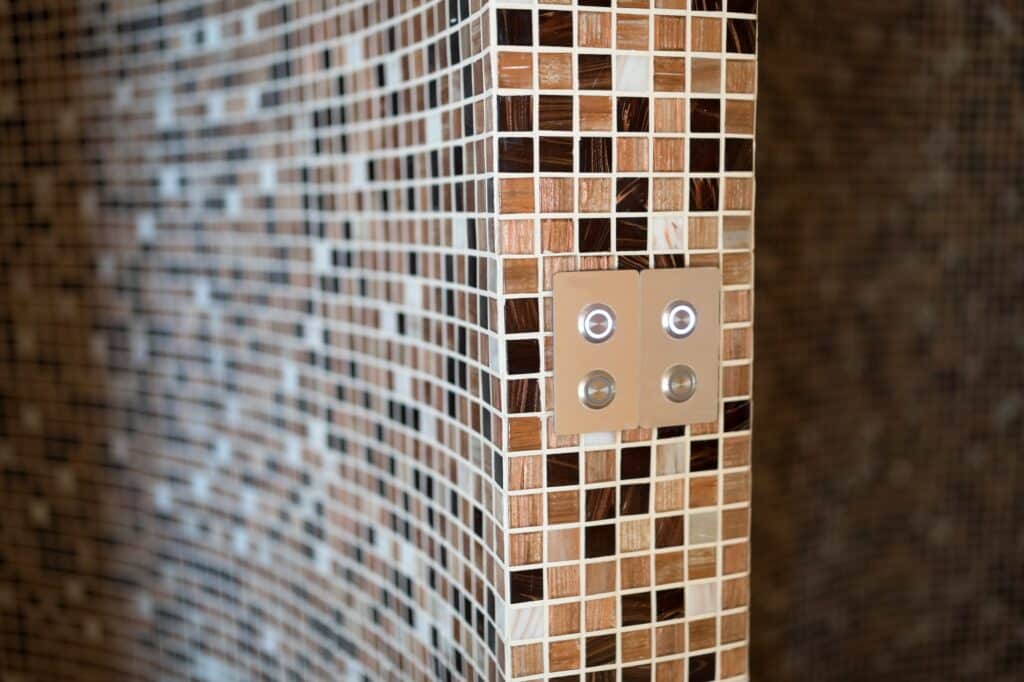Floor Tiling
Expert Installation of Ceramic, Porcelain, or Natural Stone Tiles
Floor tiling involves the careful installation of tiles on the floors of various spaces, offering both functionality and aesthetic appeal. The choice of tile material can influence the durability, maintenance needs, and overall look of the space.
Types of Tiles
- Ceramic Tiles:
- Durability:Highly durable and resistant to moisture, making them suitable for high-traffic areas.
- Installation:Typically easier to work with due to their lightweight nature.
- Variety:Available in a vast range of colors, patterns, and finishes, allowing for creative designs.
- Porcelain Tiles:
- Strength:Denser and more durable than ceramic, porcelain tiles are ideal for both indoor and outdoor applications.
- Water Resistance:Highly resistant to water, stains, and scratches, making them suitable for bathrooms or kitchen floors.
- Design Versatility:Can mimic the appearance of natural stone or wood, adding elegance to any space.
- Natural Stone Tiles:
- Uniqueness:Each stone tile is unique in color and pattern, offering a distinctive look that enhances luxury.
- Durability:Extremely durable when properly sealed and maintained; ideal for both residential and commercial spaces.
- Variety of Materials:Options include granite, marble, slate, and limestone, each with its aesthetic qualities and characteristics.
Benefits of Professional Floor Tiling Installation
- Precision: Professionals ensure that tiles are laid evenly with appropriate spacers, ensuring consistent grout lines.
- Expert Advice: Experienced installers can guide homeowners on tile selection based on their needs, preferences, and budget.
- Quality Installation: Professional installation minimizes the risk of common issues such as cracks, warping, or uneven surfaces, which may lead to expensive repairs later.
Wall Tiling
Beautiful Tile Designs for Kitchens, Bathrooms, and Backsplashes
Overview
Wall tiling encompasses the installation of tiles on vertical surfaces, such as kitchen backsplashes, bathroom walls, and shower surrounds. It adds both functionality—protecting walls from moisture and stains—and design flair to any room.
Key Areas for Wall Tiling
- Kitchens:
- Backsplashes:A popular choice for protecting walls behind sinks and cooking areas. Tiling can add color, texture, and personality to the kitchen.
- Design Options:Options range from classic subway tiles to intricate mosaic designs, accommodating various styles from traditional to modern.
- Bathrooms:
- Shower Walls:Tile is often used in shower enclosures or around bath tubs, providing a waterproof barrier and a visually appealing surface.
- Accent Walls:Tiling one or more walls can create a stunning focal point in bathrooms, enhancing the overall aesthetic.
- Other Areas:
- Feature Walls:In living rooms or dining spaces, tiling can be used creatively to create feature walls that add depth and character.
- Decorative Patterns:Wall tiles can be arranged in various patterns (e.g., herringbone, chevron) to create visual interest.
Benefits of Professional Wall Tiling Installation
- Design Expertise: Professionals provide insights into tile selection and design arrangements, ensuring the finished product aligns with the homeowner’s vision.
- Proper Techniques: Correct installation methods—like starting at the center, ensuring proper adhesive application, and precise cutting—result in a polished, professional finish.
- Long-Lasting Results: Professional installation reduces the likelihood of tiles loosening or cracking over time, ensuring that the walls maintain their beauty and integrity.
Choosing the Right Tile
When selecting tile, consider the intended use of the space. Ceramic and porcelain tiles are popular for floors and walls due to their durability and ease of maintenance. Natural stone tiles, such as granite or marble, provide a luxurious look but may require more upkeep. Additionally, consider the slip resistance of tiles, especially for wet areas like bathrooms and kitchens, to ensure safety.
The Installation Process
Proper installation is crucial for achieving a beautiful and long-lasting tile surface. This process typically involves preparing the substrate, laying the tiles, grouting, and sealing. Hiring a professional installer can ensure that the job is done correctly, as proper alignment and leveling are essential for the tile’s performance and appearance.
Maintenance Tips for Longevity
Tile surfaces can be relatively easy to maintain, but they do require some care. Regular cleaning with non-abrasive cleaners can prevent dirt buildup and maintain the shine. For grout lines, sealing can help prevent staining and damage over time. By investing in quality tiles and proper installation, homeowners can enjoy a stunning and durable surface for years to come.
Tiling is a popular choice for flooring, backsplashes, and other surfaces due to its durability, versatility, and aesthetic appeal. With a wide range of materials, colors, and designs available, tile can suit any style, from contemporary to traditional. Understanding the benefits and types of tiles can help homeowners make informed decisions for their projects.
